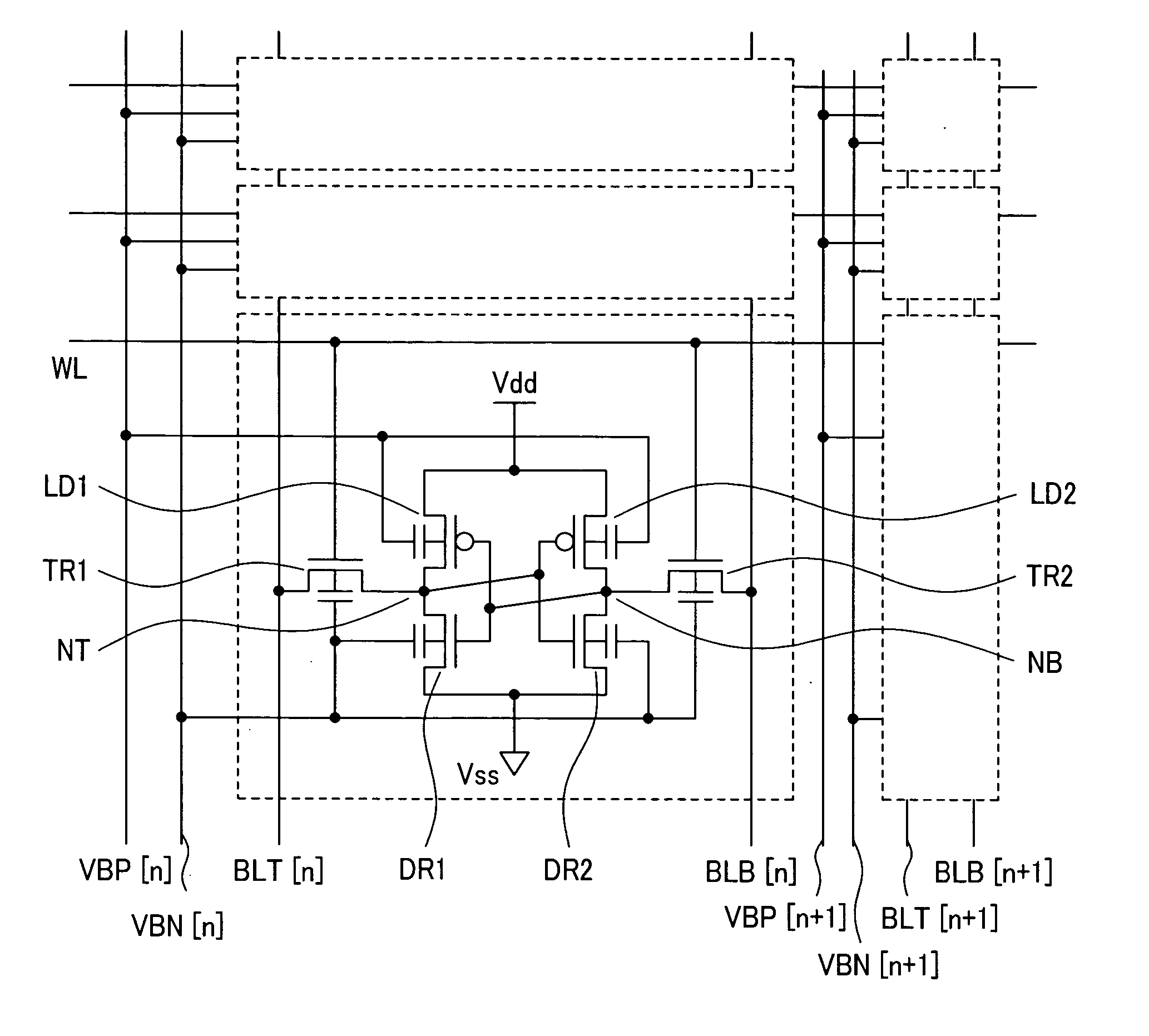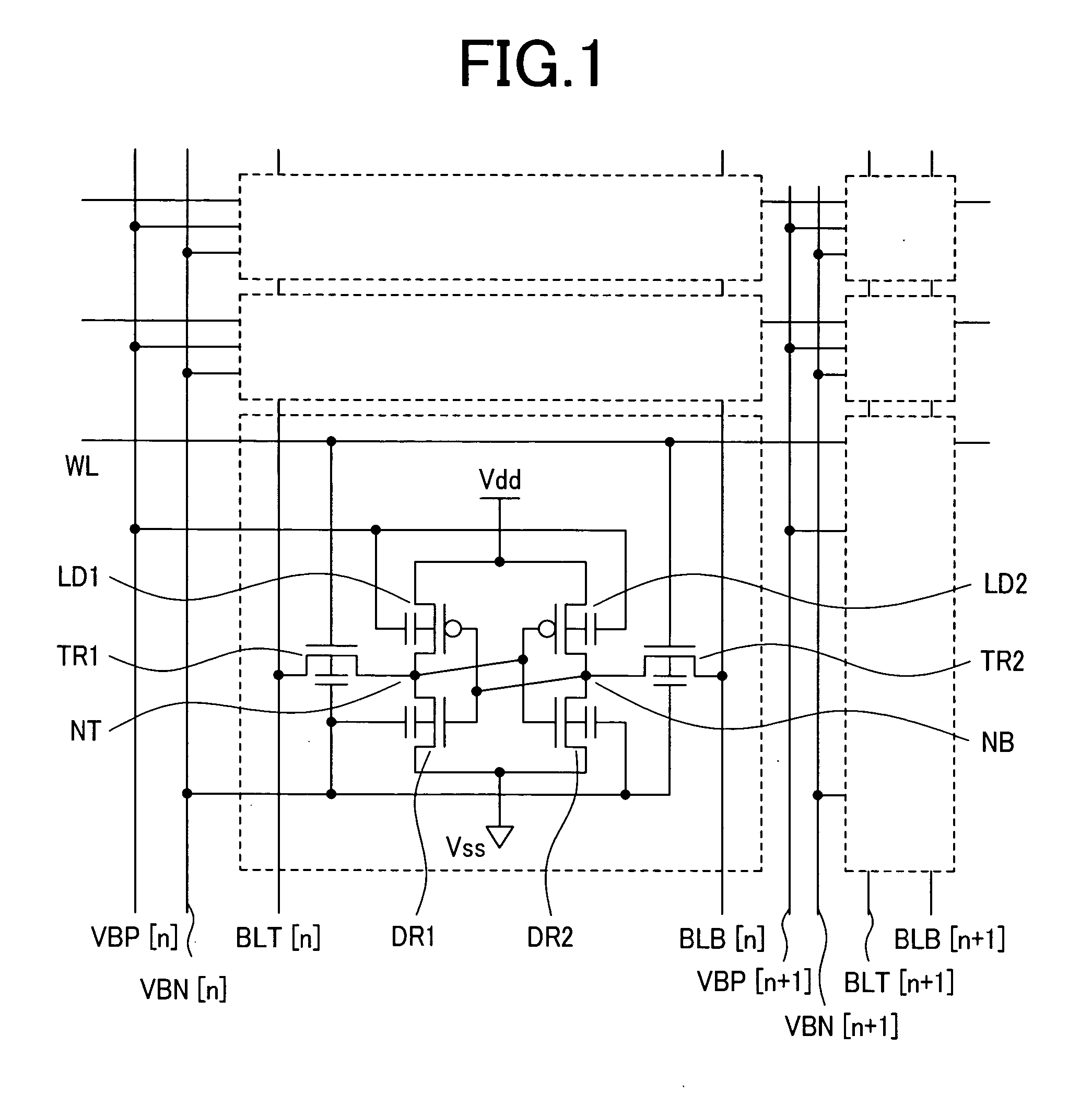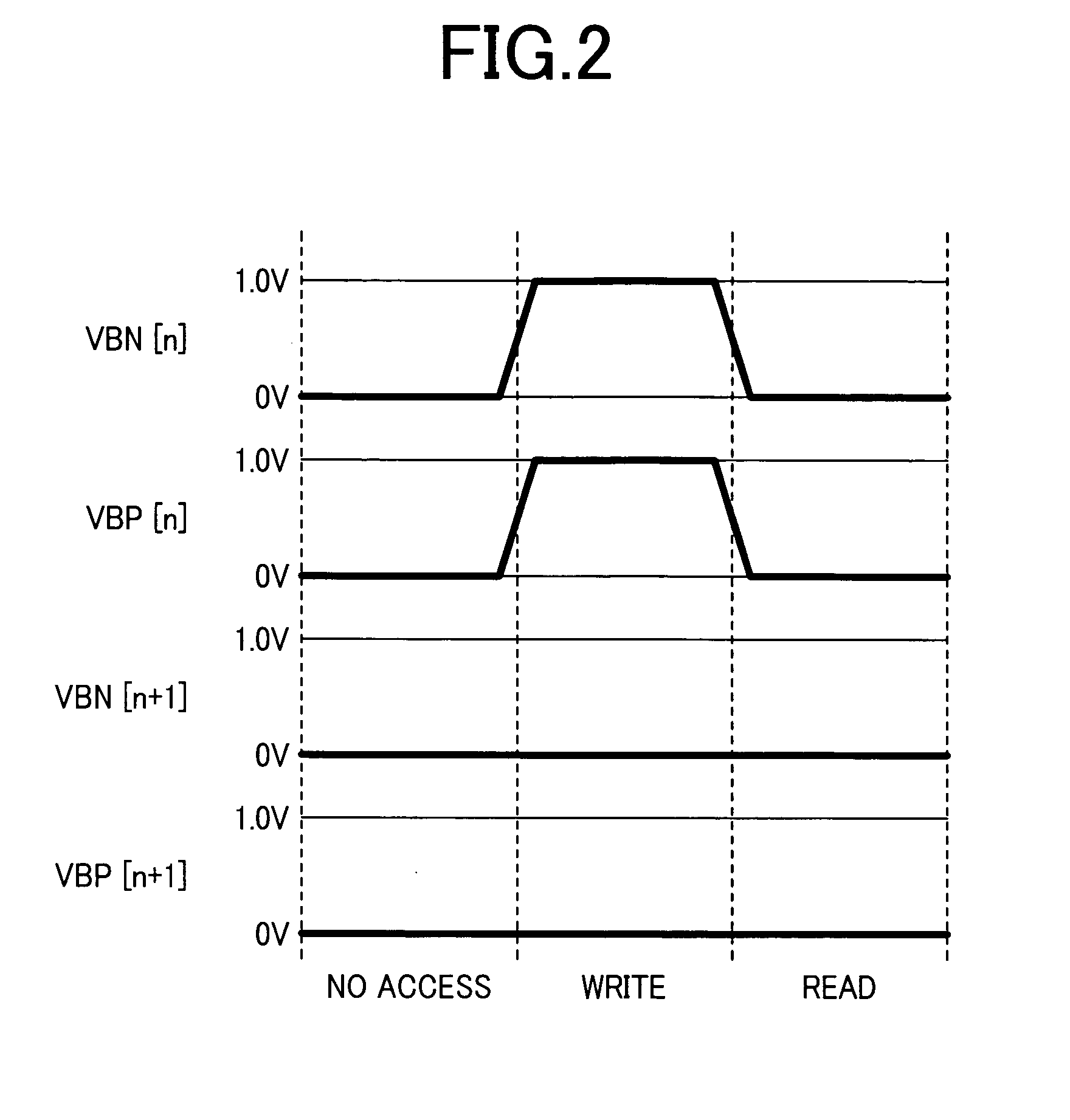Semiconductor memory device
a memory device and semiconductor technology, applied in the field of semiconductor integrated circuits, can solve the problems of increased power consumption, operational failure, and degraded operating stability of power supply voltage, and achieve the effects of improving operating speed, reducing leakage current, and improving performance characteristics
- Summary
- Abstract
- Description
- Claims
- Application Information
AI Technical Summary
Benefits of technology
Problems solved by technology
Method used
Image
Examples
first embodiment
[0061]FIG. 1 shows a circuit diagram of an SRAM circuit according to a first embodiment of the present invention. In the figure, [n] indicates the nth column and [n+1] indicates the (n+1)th column. For example, VBN[n] denotes an n-well node to which are connected the wells of the nMOS transistors in all nth-column memory cells (as described below). Such a notation will be used as necessary throughout this specification. Referring to FIG. 1, symbols BLT and BLB denote bit lines; WL, a word line; Vdd, a high level power supply line; Vss, a ground line; NT and NB, data storage nodes for storing data; TR1 and TR2, transfer transistors connected between the bit lines and the data storage nodes; DR1 and DR2, drive transistors for driving the data storage nodes to a low level; LD1 and LD2, load transistors for supplying charge to the data storage nodes; VBN[n], a node to which are connected the well nodes of the nMOS transistors in all nth-column memory cells; and VBP[n], a node to which a...
second embodiment
[0083]FIG. 13 shows an example of how to control well potentials of an SRAM memory cell according to a second embodiment of the present invention. It should be noted that in the following description of preferred embodiments, components identical to those of the first embodiment will be denoted by like numerals and only other components will be described. The circuit configuration of this memory cell is the same as that shown in FIG. 1 in terms of transistor arrangement. FIG. 13 is different from FIG. 2 in that in the “No access” state (in which the memory cell is not accessed), the well potential of the pMOS transistors is set to a high level. In the “No access” state, especially in the stand-by state in which the memory cell stores data but is not accessed, the leakage current of the memory cell may cause a problem. In this state, if the well potential of the pMOS transistors is set to a low level, a large leakage current flows since the threshold voltages Vth of the pMOS transist...
third embodiment
[0084]FIG. 14 shows a circuit diagram of an SRAM circuit according to a third embodiment of the present invention. The memory cell of the present embodiment is different from that of the first embodiment in that it includes two n-well nodes VBN1 and VBN2, instead of only one n-well node (i.e., the node VBN). The node VBN1 is connected to the wells of the nMOS transistors (on the left side) that are connected in series between the bit line BLT and the node Vss; and the node VBN2 is connected to the wells the nMOS transistors (on the right side) that are connected in series between the bit line BLB and the node Vss. The layout of the memory cell is the same as that shown in FIG. 5. (The layout of the memory cell need not be changed, since in the arrangement shown in FIG. 5, the well nodes of the nMOS transistors on the right and left sides are already connected separately.)
[0085]FIG. 15 shows the (voltage) waveform of each portion (or node) of the circuit of the present embodiment. T...
PUM
 Login to View More
Login to View More Abstract
Description
Claims
Application Information
 Login to View More
Login to View More - R&D
- Intellectual Property
- Life Sciences
- Materials
- Tech Scout
- Unparalleled Data Quality
- Higher Quality Content
- 60% Fewer Hallucinations
Browse by: Latest US Patents, China's latest patents, Technical Efficacy Thesaurus, Application Domain, Technology Topic, Popular Technical Reports.
© 2025 PatSnap. All rights reserved.Legal|Privacy policy|Modern Slavery Act Transparency Statement|Sitemap|About US| Contact US: help@patsnap.com



